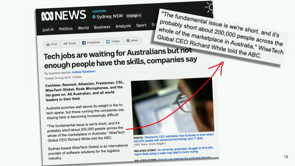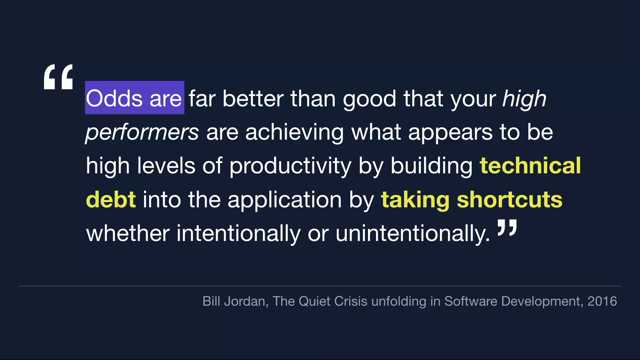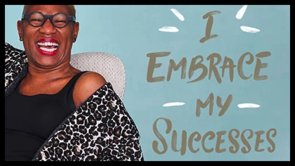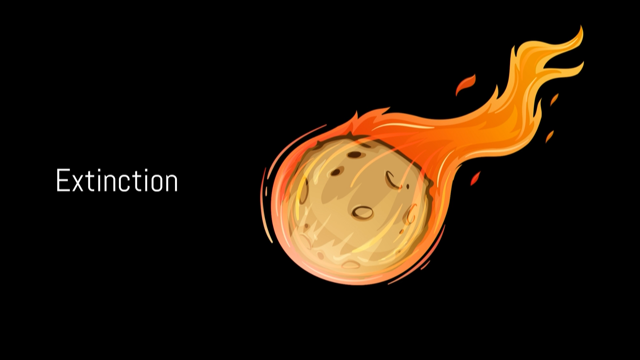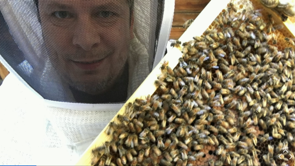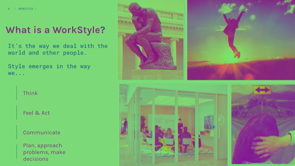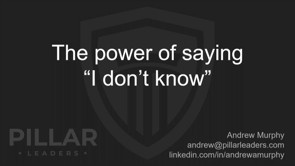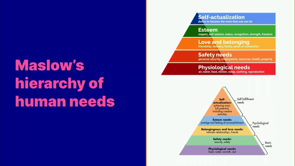
(upbeat music) - Okay, so it is 4:15, you've been here having a great day. I've gotta tell you, if I was in your shoes, I would've gone to the pub.
I would've said, "At that half an hour break, "one speaker left, I'm going to the pub." So thank you very much for staying along, 'cause I'm gonna try and really add value to your life in the last half an hour, 40 minutes.
And I thought, you know what, why don't we just relax a little bit, let that hair down, roll your sleeves up, let's just imagine we're in a pub. And the other reason why that might work is, as you can tell, I like to wander around a bit, I like to imagine myself as a bit of a lounge room singer. So I might kinda come up and sing a song to you a bit, we'll see, all right.
So I think, hopefully, I'm gonna add some value to what next? You've had a day talking about culture, but what if you were to push the boundaries a bit, what would that look like? And so as a result, I wanted to come and talk to you about an idea you might call, it's kind of counterculture.
I wanna challenge you to look beyond being nice. You've probably had a lot of great talks today that kind of were about being nice to people and I like being nice, don't get me wrong.
Some people think I'm nice as well but I will say value, coming up with good ideas, working with people who challenge me to be smart. That is what I wanted to talk about, is looking beyond being nice and creating a culture that's about great thinking. As Jaime referred to, both Will and myself ended up having psychology degrees, so the background I come from is psychology. How do people think? And how do we get them to think well in groups? So that's what I'm bringing to you today.
And I wanted to start with a bit of a story. So for the last six years I've been working in this people development space, I run a training company through facilitation, stuff like that, right? And this guy who's...
Who I've...
Just played with the picture, so you can't tell exactly who it is 'cause I haven't asked his permission. So this guy, he's the MD of a professional services business. I was working with him about five years ago and he said this really interesting thing to me, he said, "You know what, Rob? "When people leave my company, "which they're doing at alarming rates, "they tend to say, in their leaving speech, "what wonderful people that I were to work with, "the nice friends I made "but they never say, "this was a great place to do great work!" and that was really frustrating him, and I think that's the core of what I wanted to talk with you about today, is how we go beyond just like, it's such a nice place to work into I did some great work here, I was really challenged to create those great ideas. So that's the central thing I wanna get to today. And I think the first area we can probably easily agree on, as a context of why I think this is important that we get better at co-creating great ideas and solutions and solving problems, is that we'd all agree that work is getting more complex. The machines are doing the easy stuff and it leaves us humans spending more time solving harder problems.
So what does that look like? You see this everyday so I'm gonna cover it pretty quickly. It is the problems we're facing, they're much more inter-linked problems, they're not kinda isolated things you can just fix and they're done, they have lots of knock-on consequences. Things are more urgent because the fast eat the slow as someone said about six years ago.
The fast eat the slow not the big eat the small. So we have to be working faster.
And things are less predictable, it's a little bit harder to solve a problem and know exactly what's gonna happen.
It's like, all these things make our jobs a bit more complex and I think...
a famous company that tries to deal with fast-paced innovation is one that you probably talk about a lot when it comes to culture. Have you talked about Netflix already today sometimes? Not yet? Perfect. A lot of you would have read Netflix's culture deck, et cetera, et cetera. So I just wanna make a couple of points about Netflix's- First of all, up here you can see, if you go along to their jobs webpage, they talk about a great workplace combines exceptional colleagues tackling really hard problems.
So that's a recognition of...
that's actually fun to go and solve hard problems and probably many of you in this room like tackling hard problems.
But how do they do it? There's another really important word in here which is a bit red so you can't really see it but their culture is really distinctive.
Distinctive.
Again I haven't seen the rest of the speakers today but I hope that one of the points you've taken away from today, is don't borrow someone else's culture.
So don't borrow Netflix's culture, go and get your own culture, but make it distinctive. Make it so that when I walk in the door of your company, within half an hour I can tell a couple of things, really visibly, that are different about you. Quite famously, Amazon, you know, very strong culture. Ever since the word go, they found efficiency was part of their kinda DNA, and so their very first office desks, they found it was cheaper to buy a door from IKEA and a trestle and put the door on top of the trestle, that was cheaper.
So I think, and correct me if I'm wrong, but I think they still have that approach to desks and that's a visible sign of their culture. So, but here's a couple of things that we quite like, some of it you've seen before, at Netflix they say we're not a family, families are dysfunctional, we're a dream team and we need an A player in every position and if you're not an A player, we'll give you a generous four month salary package and see you later.
At the workshop I was running this morning they actually have Netflix as one of their clients so Netflix's ad agency, right, and they showed me, they talked about this this morning a bit, they showed me an email from Netflix about one of the marketing managers who just been severed, shall we say, let go.
And it was a really interesting email 'cause it talked about all her faults and it said, "Look, as a result we decided to part ways." So this is true stuff, we saw an example of this this morning.
So we're a dream team not a family, we don't have rules, we create a sense of ownership that some of you create through the environment you're in. We stimulate dissent, we wanna see different ideas rubbing up against each other, see what happens. This idea of we have informed captains, so there is someone who is responsible for each decision they'll take on board all your points of view, but they're the captain, they gotta make the decision. Some of the things that are gonna give some clues later on for what companies are doing, where they're prioritising the value of thinking and solving ideas.
They're doing some quite distinctive things I wanna share with you.
And I think...
there are some good signs in the world of how we're getting better at these hard problems and tackling them and they're happening in the classroom. I've actually got three little kids seven, five, and three and one of the things I've noticed, since I've got engaged with school after like a thirty-year gap of not being in school, which was great, 'cause I didn't like school, don't know about you.
Since I've got back engaged in school 'cause my kids I've noticed they're doing things very differently. If you look at this classroom and what I noticed in my kid's classroom was they talk about critical thinking.
They've got De Bono's six hats on the wall instead of just pictures of dinosaurs.
So they're talking about this stuff in school with my seven year old, and my five year old had her first orientation morning today as well, which was super exciting.
So this is quite a good thing that they're changing the way they educate our kids. What they're doing, if you look around the world at what education was focusing on, you might hear the word STEM but STEM is actually still that knowledge, science, technology, blah-blah-blah-blah.
In fact, there's a group called the Partnership for 21st Century Learning, which has identified these four C's as the skills that we need to teach our kids for the next 20 years.
These are the skills that computers can't do very well still.
Although if you ask Elon Musk, he says that will be able to do everything that humans can do by the year 2030.
And as you well know, other people say that there are always gonna be things that humans can do better than computers.
So take your pick, but not just that partnership for 21st Century Learning but the World Economic Forum, the consultancy groups, they're aligning around similar kind of skills. Two thinking skills, creative thinking, critical thinking and two relational skills, collaboration and communication. So these are the kind of skills that I think we need to bake into our cultures 'cause culture might sound like fluffy attitudinal stuff but it needs to result in behaviours and skills changing. So that's good that my daughters are learning these skills. That leaves us with a bit of a problem, what do we do until the year 2040, when those kids are actually in the workforce, able to solve the hard problems? That's for the rest of us to deal with.
We can up skill, there's proof that you can improve your critical thinking, you can improve these skills today even if you're a grown-up like all of us.
Except we have actually got one little child in here don't we? - [Audience Member] Left her outside.
- You left her outside? That would have been really good for her, we could've-- All right.
So part two, we see a bit of a gap, we got this 20-year gap where we need to solve the world's hardest problems in our organisations, in our governments, and yet all of us, you probably went through a school like me, where you didn't get taught how to collaborate or your marks were based on what you did as an individual, one person right? And then you went to uni, and you had to do those really terribly annoying group projects where there was no leader and half the people didn't even show up and then you were left doing it all, remember those ones? But that doesn't reflect real life 'cause at work that doesn't happen, at work there's a leader.
So we don't get taught how to collaborate.
It's weird.
So what are we gonna until the year 2040? I think this man is a problem, have you talked about Simon Sinek today? Have you talked about Start With Why today? No, good.
All right, because I think this man is the problem. Hang on.
He's got some, where is he? Come on you.
Oh, his devil horns are gone! I put devil horns on him and everything.
(audience laughs) (laughs) Okay, all right. Let me tell you, I dunno where that slide's gone, but let me tell you why I think Simon Sinek has a bit of a problem.
He wrote a book called Start With Why, it was wildly popular 10 years ago and it was all about finding meaning and purpose at work. Who's read that? Knows about it, were at the TED Talk? Right, wildly popular.
This guy, in his time, was an amazing thought leader and we all went: (gasps) "You're right Simon! "I need to find meaning and purpose in my work." Who's actually tried to implement that at their work? Who's like had all that, we need to find more meaning and purpose, let's redefine the purpose.
You've done that? Right.
It doesn't fucking work, we're in the pub so I can swear right? It doesn't work, it's really hard.
I've worked with a few different companies, we try to redefine their purpose and you know what? The purpose is actually to make money for the shareholders. (audience laughs) It's hard.
I like Simon actually, but I just think his time has come and gone and we need to do that, we need to sense purpose, we need to be nice to each other, absolutely, but there's something beyond that.
So he helped us break through, there's a pyramid here, right? So we start, when it comes to work, we have to make sure that everyone's making some effort, they're doing stuff, things are getting done, we're productive.
Hopefully we then break through that and we go, "Thank you, Simon, for showing us the light." We will get into talking about happiness, and being, and engagement, and retention, and attraction, and all those things, and people are wonderful things. But today the competitive edge is moving a little bit beyond that, it's moving up into this area of ideas.
It's not good enough just to be nice, we've actually got to be creating ideas and intellectual property.
I've worked with a number of companies that feature in the Great Places to Work analysis, you might see this come out every year, 50 Great Places to Work in Australia.
I've been lucky enough to work with them and they're very nice but not all of them are actually that financially successful.
Some of them, they've just won number six in the Top 50 Places to Work and it's a bit smoke and mirrors.
It's a bit like actually talk to the staff and the turn over is 37%, oops.
You know what, I think it's just a bit beyond great places to work, right? It's actually, we need to get into great places to think, great places to think because I think this is the one graph I've gotten, I come from a background of before I worked for myself come from an advertising and media background where I gave loads of graphs.
So I've given enough graphs to the world so today only one.
This is it, it's the point that the value we're creating in our organisations is intangible.
Yeah, you probably don't make widgets.
Anyone here actually make widgets? Georgina's got a cheese company, she makes cheese, that's tangible, that right? But most of us is intangible, so that means it's about intellectual property, it's about our ideas, that's what we're creating, that's what we're creating.
I think to break through that next barrier, beyond "This is a wonderful place to come and work, "I'm making life long friends, "my leaving speech is all warm and fuzzy." I think the breakthrough is, is this idea of how are we changing the world? How are we growing? What are our ideas? What are our solutions? How do we think? Those things are super interesting which is my passion, it's why I set out my company, to help people make better decisions, decision making, but more broadly these days about thinking. How do we find these great places to think instead of just great places to work? So be nice, absolutely, but also really challenge your teams, your groups, your organisation.
If I walk in that door what do I see you do differently in meetings to actually create better outcomes? What do we actually see? I'm imagining that as a pint of English Best Bitter, I'm in the pub.
Maybe you're having a bubbly Pinot Grigio, I don't know. Here we are, so, as a clue, if we go on this journey to find out which companies are embracing, what I'm gonna call for today's purposes, a counterculture, where they're saying, you know what nice is great, we'll have that but we also want a bit of this great thinking where we really challenge and push our people. So here's a clue: five people run an artificial intelligence company and they've all got maths PHD's.
Very clever people.
They were put in a study about solving problems and they came last.
And the reason was because they all thought in the same kind of way.
All maths PHD's, right? There was no diversity.
I know diversity's been on the agenda today. When I think about diversity, from my perspective, it's only one perspective but I think of cognitive diversity.
Can you find out who thinks in different ways and how they can fit together to challenge each other? We'll talk about that later on, but one of the clues we're starting to see is you need gender diversity absolutely, you need racial diversity absolutely, one of the things that's actually mediating, is it's bringing in cognitive diversity.
Cognitive diversity, people who see the world and solve problems in different ways.
So that's a bit of a clue, and I wanted to kind of give you a bit of a tour through over the last six years I've been running this company and trying to find out the famous companies who are thinking a bit differently and the companies that I work with that tend to be a little bit smaller, what are they doing a bit differently? How can we test stuff? How can we try stuff? What works to give this culture of thinking? So I'm gonna take you on a bit of a journey and it starts with a company called, well it's actually called 3P Learning, has anyone heard of 3P Learning? Couple of people, all right.
They own this protocol, Mathletics, which if you've got kids, you would have seen your kids playing games on their iPads to teach them maths, so that's awesome.
Company started about 15 years ago by a local entrepreneur and I was lucky enough to do a bunch of work with him three or four years ago.
And I got a little bit of a clue about how to get teams to change the way they think. So I was doing some team building work with their leadership team and the first thing we did, was these people had been working together for several years and it looked like they knew each other really well but they actually didn't know each other's personal life that well.
They talked about work a lot and not really about how you doing, how's the family, all this stuff.
So the first thing we did was we had to get that team functional in the same as what you call today, psychological safety.
Have you talked about psychological safety today? That sense of honesty and trust that Google proved was the kind of foundational part of a team.
We know each other well, I trust you in a knife fight, that you'd kind of back me up, not run away, right? I trust you to do what you said you'd do.
So that's the first thing we have to do is you have to work on the team.
The second thing you have to work on is the team's thinking, and so what we did with them was, I remember one particular off site in a venue called the Gunners Barracks in Mosman, which is awesome if you're doing an off site anytime soon. It's not that expensive as well, great scones, great scones, which is really important if you're having an off site, you need great scones, don't you? And by the way, as a slight digression, cream goes under jam if the cream is really thick. If the cream is really fluffy, light weight cream, it goes on top of the jam.
Is that right, or am I right? (audience chuckles) So the cream/jam thing actually depends on the thickness of the cream, right? Okay, anyway! Back to the main track of my presentation, that wasn't in the script by the way, that bit. So, they'd run this thing called The World Education Games for like five years and their partnership with UNICEF. We're at this off site, we've got the team working better together which is absolutely the first part, you've gotta have a functional team before you can think well together.
Second part is what are the kind of questions we ask each other? So a question was put on the table, first of all it was like well how do we make The World Education Games better? Lots of people had different ideas about that, but then we asked a different question, we asked why are we doing The World Education Games? And that sounds simple, I know this is the kind of question you ask in meetings and you ask in meetings all the time but not everyone else does, not everyone else does. Asking the question, half an hour later we had a solution so how to completely reinvent The World Education Games which is a problem they'd be struggling with for five years. So two parts to that story, one is you've gotta have team working, and then you gotta have the right questions being put on the table.
This is pretty obvious stuff but I've found over the last six years running this business.
You can't separate thinking from teaminess, you have to work on both, you've gotta have a safe kind of environment before you can ask the right questions otherwise no one will pipe up.
So that's like a little clue as well, so let's go on this journey.
Oh no, I've got another graph, I said I only had one, you're gonna have to slap me afterwards.
Okay, so this is my second to last graph.
So on this journey we need to work out, okay is big data the answer to making better decisions and coming up with better ideas? And according to this McKinsey's Case for Behavioural Strategy, they actually tracked 1,000 really big businesses over five years to see what was happening when the decision was made and what was the result five years later that's under shareholder value? When they crunched all those numbers together what they found here was they found that the amount of data that you used in that decision accounted for 7% of the difference between good and bad outcomes, whereas the things the humans did in the room, the kind of conversations they had, made up 53% of the variation.
So the other 40% of your calculating was based on industry-specific factors and other things like that, but essentially what they're saying is that the very human conversations that happen around your leadership table or your team table, they make up a massive amount more impact on the quality of decisions and thinking than data alone. What they found, some very specific things, for example, you need to have subject matter experts in the room, not just the leadership team, pretty obvious right? But not every company is doing that.
Next thing, you need to have at least two options, they found that most business decisions, there's only one option on the table.
We go, "Are we're gonna buy this company or not?" which is actually really only one option, so status quo or one new option.
71% of businesses they only have one option, do we do it or not? As opposed to well we could statue quo or we could do it or we could do something else with that money, that's the better decision making process.
This has given us some clues, right? How we doing for time? 24 minutes okay, cool.
So based on that, so we talk about humans.
So my work as someone who helps companies think better, it doesn't involve that much work on big data. In fact no work on big data at all, I just work with humans.
So I think we need to start to kind of collective understanding, how you think individually and then I'm gonna get pretty quickly onto how we think in groups.
So very quickly, the question in your mind, I want you to look at that picture of that woman and just work at what she's feeling.
Let's just shout out some words, audience interact, just shout out some words.
What's she feeling? So you probably got a fairly good gut feeling, something like angry or disappointed or something like that. Our brains are very good at making gut-feel decisions about the eight basic human emotions.
Pretty good at telling what kind of emotion she is feeling. Our brains are amazing at doing that, much better than computers today.
And that, by the father of behavioural economics, Danny Kahneman who writes that book called Thinking Fast and Slow, you've seen in the airport picked up the first page and gone, "Oh my God that's way too hard." and put it down again, that book.
It's actually a really good book if you're into the stuff but for most people it's a bit too dense.
Anyway, he calls that system on thinking, which is basically your gut feeling, instant answers, and he compares it to System 2 thinking.
So another quick challenge for you, what is 75% of seven? I just want you to apply your brains to that for just a few seconds.
What's 75% of seven? And I'm not worried about whether you got the answer right because only a very small number of people can get 5.25, right? What I'm worried about is how your brain felt when you were doing that.
It should have felt a bit like "Oh my God, I'm having to clunk through the gears here. "I should know this, I don't like this." I should have made you feel pretty annoyed with me, right? So that type of thinking is very conscious, I'm having to put things in my short-term memory, twiddle around with them, try and work out 75% of-- (babbling) It's annoying and actually takes up quite a lot of effort. Which is why most of our days we spend using System 1 thinking, where am I gonna lunch? What do I feel like? That's literally your gut feel.
(audience laughs) Normally, as you probably know about all this stuff, the System 1 thinking's pretty useful, it's all that automated decision making, your instinctual cuts.
System 2, we need to apply that, especially at work when we're talking about should we do this project? Should we develop this next sprints? What we're gonna do? That System 2 is that more kind of conscious mental effort which people don't really like doing, let's be honest, we don't really liked doing 75% of seven that much. So here's some of the features of those two systems. This is basically how humans make decisions and how they think, either System 1 or System 2. That's some features there are.
I wanna just kind of very quickly paint a picture of how hiring is done that illustrates this.
Let's say, who's responsible for hiring at all? Whoever hires anyone? A few people, all right.
What we're gonna see, as you well know, is if you interview someone you basically make a holistic decision about their suitableness for the job in the first 10 seconds, that is proven that is not just an urban myth, and so what Kahneman did actually, same guy, and he tells a really nice story about this, is he changed the way the Israeli Army recruited. By involving something called behavioural interviewing which is where you'd decide what are the three things I need in this job? They are attention to detail, high quality critical thinking, and collaboration. Then what you have to do, is you have to ask that person loads of behavioural questions, what did you do in this situation? Tell me about your behaviour, your critical thinking, give me an example, and then you rate them on that dimension out of 10, and then you move on to collaboration and rate them in that dimension out of 10.
And he showed if you do that, then at the end of that process of rating them out of 10 on the three most important things and then you ask someone, just give me an overall rating out of 10 for them.
Your gut feel actually becomes pretty good, that last question about how good you think they would be ends up a reasonably good predictor of their success in the role.
But your first gut feel, without doing those behavioural interview things is actually not very good predictor at all. So that's how we kind of try and cross some of these boundaries from System 1 thinking to System 2 thinking, we have to make quite a lot of effort to make our hiring better and not based on gut feeling. Moving on.
So here's my proposition to you, so I've got thinking about this and I thought, well, if individuals have two ways of thinking they have System 1 and they have System 2, that's not talking about how groups make a decision, that's not talking about how groups come up with an idea. So I've coined this term called System 3 thinking, I'm in the early stages of writing a book about it. Very early stages actually, but a few notes, you never know. Last part of the talk now, I wanna talk about, so what does that look like? How do we build on the stuff we talked about so far? How do we create visible ways of thinking in our organisation so you can solve problems better, come up with bigger ideas, et cetera? Okay, System 3 thinking.
So I wanna talk about a couple companies what I've learned, what I've seen, what I've researched on the journey and then wrap it all up.
So here are some logo's, we love logos, come on. These are nine companies I could talk about, I'm not gonna talk about all of them but it's just to say that they're ones surrounded by green border, they're ones that I've worked with and the ones that aren't surrounded by the green border are ones that I've studied and they're a little bit about, maybe not so much as some of you guys actually work at Atlassian, we've got Eve Burn, yeah Eve. So you would know more about it then I do but I've studied them a bit.
So I wanna kind of tell you a couple stories about what these companies do that you could potentially think about, "Oh maybe that is something I could borrow." Be careful about this, get your own culture, don't borrow someone else's but you could be inspired by some of the things they're doing, so let's have a look. Just gonna tell you a couple of stories.
Amazon, very interesting, so Jeff Bezos writes a shareholder letter every year to all his shareholders, funny that.
Most years he writes something about how Amazon is making decisions.
Like if you read through them like I have, he often talks about how we're improving the way we make decisions. Here are some of his principles that you might wanna borrow or think about. First of all, how they have meetings at Amazon. Some of you will notice, but let me just share with everyone else, how they have meetings at Amazon is someone has to prepare a written memo outlining a business case before the meeting but you don't have to read it beforehand, when you arrive in the meeting, everyone gets 15 minutes to read it in silence and digest it.
We might also have a spare empty chair in the room that is the voice of the customer that we always think well what would the customer say? We would also have a very clear tie-breaker, someone who can actually resolve any disputes between different departments very quickly and he would also take the position as leader, but sometimes he can disagree with you but still commit to your decision.
And say look I don't agree or think you're right but I'm actually, I trust you I'm gonna back you, I'm gonna invest in this.
So disagree and commit which is uncomfortable for a leader to do but he's got used to doing that, right? These are some of the things they do at Amazon to very clearly and visibly create a culture of great thinking and great decision making but not many companies are doing that.
Most companies if I turned up at meetings in most companies in Australia that look fairly similar, they start late, people go on tangents, then they have clear outcomes at the end, all that stuff.
There's only a couple more case studies here before we wrap it up.
RWE is a German power company and they did something pretty interesting.
They looked at the cognitive biases in their company. Which is, again, somebody throwing cognitive biases around. Were they making fair objective decisions? And they realised they probably weren't.
So they were looking in acquisition and they decided to do this thing called Red Team Blue Team.
Which is, we're gonna have one team make a case for the acquisition and one team make a case against the acquisition. That is very different to what most companies do. So if you turn up at their company, that's visible thinking. I can see you're thinking a little bit differently by your behaviours and lo and behold you get much better cases for and against, there's much more tension you're actually mining for conflict and differences in opinion and that's what companies that break through the nice barrier get to a place where they can actually have really good, great, enjoyable disagreements.
Companies that are stuck in nice, everyone nods, "Yeah yeah yeah, absolutely, "totally agree with you." And then they go away and don't do any of it or they're nice in the meeting then outside the meeting they go, "Oh my God that was such a shit meeting! "I didn't agree with any of that at all." So we need to create that cycle to do with safety so we can disagree about ideas without being rude or offensive. Right? So Red Team Blue Team.
And of course, the cheapest one of these will cost $7.99 is to get yourself a rubber chicken. Atlassian, you actually use these? Do you wanna share to everyone how you actually use these? - [Audience Member] Yes.
- Can you tell how you use these at Atlassian? What do you use them for? Very exciting that.
When I read about this I was inspired to go and buy myself a rubber chicken, which is really a dog toy if you're interested.
The way they talk about them publicly is not just about, it's time for a meeting, it's also, "Hang on, you going off on a tangent, "so come back together." So you might use that within meetings to get people off the tangents.
So that's a small one, if you take nothing away from today, it's go and buy yourself a rubber chicken.
Okay.
So...
I've given you a few examples on the way, as well as those three quick ones there.
So can we pull this together in a framework? Ah, well, luckily we can! This is my most texty chart, so again, I was thinking about taking this one out, but you know.
Please forgive me.
The point of this chart is not necessarily in the detail, it's in the idea that some of the things these companies are doing are counterintuitive.
So we're talking about counterculture.
We're talking about people pushing back against this, "Ah, just to be nice.
"Let's be nice and let's be smart." You have to do things that are a bit counterintuitive, you have to value silence.
You have to encourage constructive conflict. You have to have a leader who can disagree and still back you.
All of these things up here on the right is what counterculture could look like.
We're solving the right problem, not the first problem we see.
Things like that.
So some of those are pretty familiar, but they take guts to make them a visible, tangible parts of our culture.
And luckily for us, they divide into two types of thinking, two types of thinking.
So let me tell you now, what does System 3 look like? If you're gonna be a counterrevolutionary pushing the value of ideas, what does that look like? They go into two types of thinking right? And they actually populate what we're gonna call the System 3 Diamond. So if you really simplify the stuff I've been talking about today, you end up with a diamond model.
And if you imagine any kind of meeting that you're having about a project or an idea, really easy way to make it better is to spend the first half of that meeting in divergent thinking.
Where we are deliberately mining for all different points of view, we're making sure the quiet people get heard. We're making sure we start out with the right problem, and then we go, "Right, let's go broad.
"We've got an hour.
"The first half hour we're going broad." And you flag that to everyone and say, "We've got five minutes left to go broad, "anyone got anything to add?" Okay! Half an hour's flicked over, now we're gonna go into convergent thinking, which is about aligning everyone on a decision and outcome.
And so the eight things I put up earlier, they split nicely between those two things. The stuff I've talking about today, you can populate into a nice diamond model. And this really works in practise, right? If I'm facilitating conversations, we literally say, "Okay, hour, half hour divergent, "half hour convergent." But what most people do is they go divergent for a bit until someone gets pissed off and says, "No, we need to make a decision!" and they converge for a bit, and then someone else goes, "But we haven't thought about this!" and they diverge again, right? And then someone goes, "We've only got five minutes left! "Quick, what's the decision?" "Oh, I don't know! "You make it!" That's not how it should be.
That's not how it should be, so really nice discipline to see in a meeting. So that half an hour diverge, half an hour converge. And of course, I'm only scratching the surface of what you could do.
Hopefully getting some of these practical tips, whether it's the chicken, whatever it is.
Maybe the chicken goes halfway.
In the middle is something called the Groan Zone. And hats off to a group called the facilitators or a book called The Facilitator's Toolkit for starting me down this direction, but the idea is about halfway in, some people like to move really fast and they go, "Oh, God, can we just finish this now?!" and half the people are going, "Ah no, we've got so much more we could explore." And coming back to the maths PhD's, this side, they have cognitive diversity.
One of the principles of cognitive diversity is to get those two types of people in the room. There are people that wanna rush to a solution, they're solution focused and there are people who're explorers, and those two people can be quite different and there is a bit of tension when you have meetings with both of them in. Particularly in that middle area, that Groan Zone where someone wants to converge, someone wants to keep diverging, but that's the key to cognitive diversity, is having the people that wanna drive to the solution in the same meeting as the people who wanna explore and find out a bit more.
Okay.
Wrapping up.
How we doing? Okay, right.
One more practical tip.
What does this mean in the real life? So I was listening to a great podcast called How We Work.
Ella Bache CEO was on it.
This is last night, fresh from my podcast listening. She has a rule called 1-3-1.
Any meeting with her, you gotta come with one problem, three solutions, three options, and one recommendation.
So very simple, that is on the whiteboard, that is on the agendas.
A very visible way of saying, "Okay, start with a clear problem, "make sure you diverge and have three options, "but give me a clue on which one you prefer." That is the diamond-shaped thinking in a very simple way that works for her.
1-3-1.
Okay.
Now, so how does it end, how does it begin? So at the start, I put up a picture of this guy who is seeing a bit further that everyone else and John's brief today, when I realised I was doing this on Monday, was that I end the session, end the day with, "What next?" Do something a little bit different, so that was what I was trying to do today and my ask of you, and of all of us really, we're here trying to change things up a bit, let's do things a bit better.
So my ask of you is this: First of all, I think it's time for us all to start a bit of this counterculture revolution to challenge that nice is good enough.
Nice is great, it's not enough.
I think maybe, just maybe, today I've challenged a little bit of the way you think about culture from being about rewards and recognition, attraction, engagement, blah blah blah into actually culture's gotta create intellectual property.
Instead of just having creativity as a value, what are the visible ways we can see that in our companies? The visible ways, right? I think given the problems we're up against, without much choice, but to get better at how to we collaboratively solve these really tough problems in our companies, in our organisations and even in our spare time? How are we solving these tough problems, right? So, that's me done! They put the same PowerPoint effects, right? (chuckles) It's my leaving speech, so I started with this idea of leaving speeches.
So as I leave you today, I got to meet a few of you beforehand, so there were some very nice people in the room. I really enjoyed working with you today.
I was quite inspired actually with this opportunity to stand in for Will and come have a chat to you.
And it kinda pushed me to do some good thinking. So some of the stuff today I'm presenting in a new way, so it was a really great opportunity for me to do, I don't know whether you agree with me, but for me it felt like part of my important work that I'm doing.
So I felt like as my leaving speech leaving here today, that not only did I get to meet some nice people, but I like to think I put some ideas out in the world that might be kinda important to a few of you. So that's my leaving speech for you today and I would end by saying if you wanna get some more details on the how, if I've kind of maybe got you a tiny bit interested, drop me a line any of these addresses here and I'll send you a guide to System 3 thinking in a bit more detail that might inspire you to make some visible changes in the way your organisation thinks.
So without further ado, I think we've got a few minutes for questions, but...
Okay.
- [Man] Applause please for Rob.
(applause) (upbeat music)


